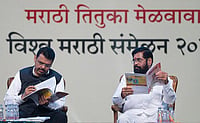ABB Asea Brown Boveri, the Zurich-headquartered Swiss-Swedish $35-billion engineering giant, has been held in awe by managers across the world for a decade now. ABB, led by its maverick CEO Percy Barnevik (he has now retired), has been constantly redefining management theory with startling innovations.
Management guru Tom Peters described Barnevik's strategy thus: "Get rid (almost entirely) of the centre; shift responsibility to modest-size, human-scale units." In 1980, when Barnevik came to head Swedish giant Asea, he pruned the company's 1,700-strong central staff to 200—in 100 days. When Asea merged with the Swiss Brown Boveri et Cie in 1987, Barnevik cut Brown Boveri's headquarters staff from 4,000 to 200. In Finland, when Barnevik struck, central staff numbered 880. In a matter of months, they were 25.
Having cut through the flab—Barnevik's point was that headquarters staff do not generate any revenue—he broke the company up into 1,200 pieces—each a profit centre, each with its own balance sheet and customers. Managers were overnight turned into entrepreneurs, and a 200,000-employee corporation into 1,200 small, agile outfits. And, crucially, these small teams can at any time tap into the massive knowledge base of ABB's globe-girdling operations. So, Barnevik's basic management principle, paradoxical as it may sound, was to have every business work as an independent unit, while cooperating constantly with all other units.
This is the megacorp that is Maran's inspiration. But giving shape to that idea will be extremely difficult.


























